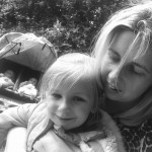The importance of early intervention

Sarah Paull
Sharing fun and chaos of our family life, Whilst helping our twin girls reach there full potential after a brain injury.
You may well have heard of the term “Early intervention” when going to various hospital appointments.
It’s a term I knew little about until the twins were born in April 2019 and quite frankly we are in the thick of it right now, with input coming from a multi-disciplinary team of professionals to help our children achieve their full potential.
This doesn’t mean it will cure them or “catch up” but be the best they can be and like any child will have stronger and weaker skills that may change in time with excessive input.
What I have learnt is that many of the things that were seen as impossible a year ago are now quite a possibility in time and as a parent adjusting to two children with development delays and complex movements, there are many more things to achieve than typical milestones of talking and walking.
There are all these tiny inchstones that are just as big an achievement.
A decent eye gaze that’s reliable, a few Makaton signs to communicate choices can make a massive difference in everyday life, from there we can add on more as time goes on!
The first few years are imperative to achieving the best outcomes.
Any child changes considerably in the first few years.
Children with brain injuries caused at birth get better outcomes than previous generations before as we as a community have realised leaving no stone unturned and supporting each area of development can wipe millions off a lifetime care bill and rewrite the text book of prognosis.
Many children who start early intervention programmes at home and nursery in the first year of life with appropriate postural support can rewrite the expectations of where they are on the gross motor function system.
Between ages 2 and 4 over half of these kids get reclassified at a more mobile level.
So when shall we start? From the get go!
There is no sit and wait, start helping your child understand there body and refine their movements, help facilitate weight shifting, strengthening, weight bearing, fine motor movements, talking, social interactions, the list is endless!
No one will wish they done less therapy if there kids are running around and babbling, but doing nothing you will always wonder what could have been.


